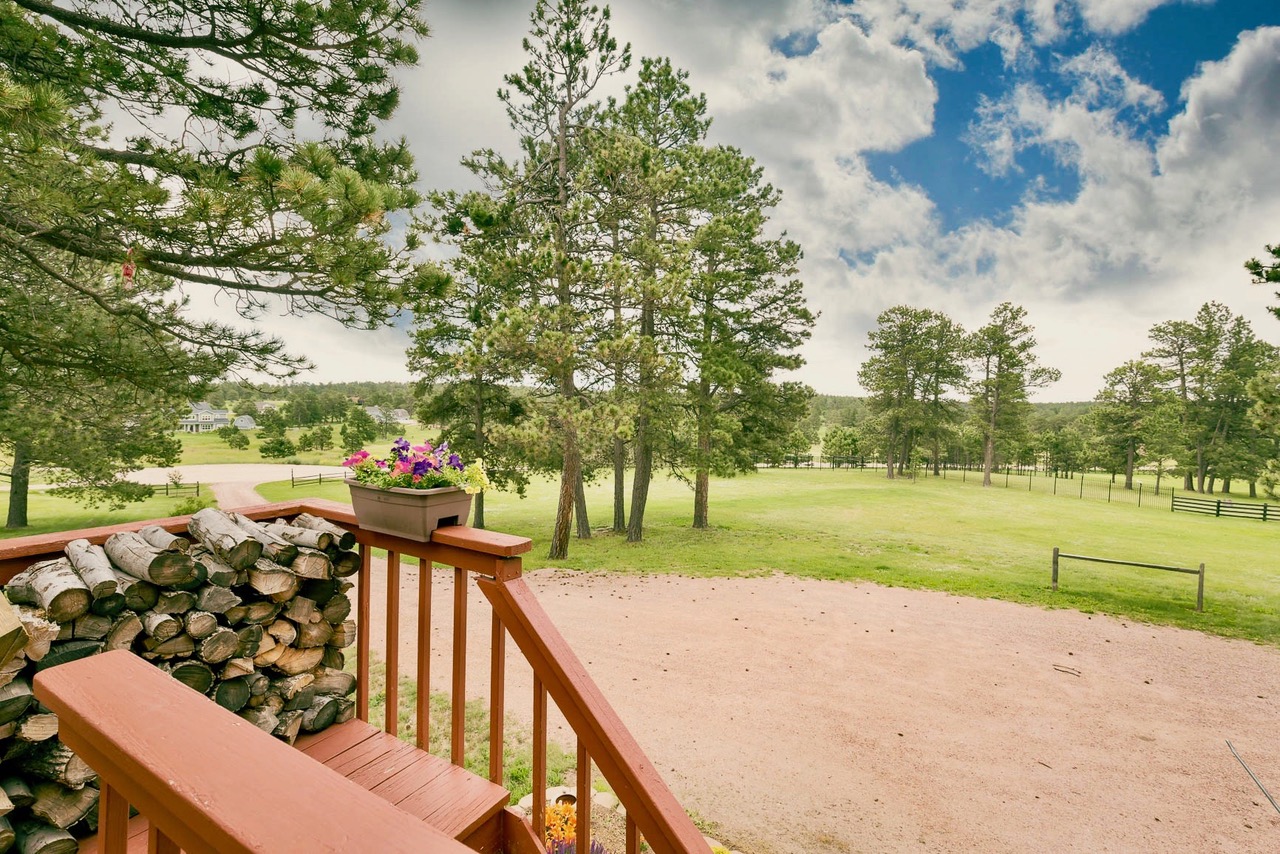

Today only a few remnants of the once thriving townsite remain. Its population peaked at about 400 in 1910 and was already in decline when the railroad ceased operations in 1935. Eastonville (actually located just to the east of the planning area) was begun in the early 1880s as a stop on the Colorado and Southern Railway. The largest and most long-lived of these was the Town of Eastonville. Several towns and settlements dotted the planning area at one time or another during its history. By the 1920s the area was mostly consolidated into large ranches. The drought and the Depression of the 1930s combined to eliminate most types of agriculture in the planning area. Agricultural productivity was subject to boom and bust cycles with crops often ruined by drought, floods, hail, blizzards, or grasshoppers. Potatoes, however, were the agricultural product for which the Black Forest area became most renowned. A wide variety of crops were raised, including cattle, sheep, alfalfa, wheat, corn, hay and beans. More than one billion board feet of lumber were removed to provide ties for the Kansas Pacific, Denver and Rio Grande and New Orleans Railroads.Īlthough lumbering continued sporadically through the 1950s, farming and ranching had become the dominant activities by the 1880s. Logging in the Pineries reached its height in the summer of 1870 when over 700 teamsters and 1,000 lumberjacks and tie hacks were employed, mostly for railway work. An 1880 article from the Colorado Springs Gazette stated that for years nearly every foot of timber used in Denver was hauled from the Pineries. Lumber and mine props were supplied to build Colorado Springs and Denver. General Palmer was the first major landowner of Black Forest when he established the Colorado Pinery Trust in 1870 he purchased 43,000 acres. The first of what would be several dozen sawmills was constructed in 1860. When American pioneers began to settle the region in the late 1850s the Black Forest became an important center of activity, primarily as a source of scarce timber. Almost 40 years later, the Arapahoe and Cheyenne tribes joined forces to drive out the Kiowas and become the last Native Americans to inhabit the area. These tribes were displaced by the Kiowas around 1800. The dense Ponderosa Pines provided them with protection, fuel, and timber for lodgepoles. The first known inhabitants were the Ute and Comanche Indians. Īrrowheads and charcoal pits provide evidence that the planning area was occupied by Native Americans at least 800 years ago. Although the origin of the name is not clear, that portion of the Pineries north of Colorado Springs became known as the "Black Forest" by around the turn of the century. Altogether the Pineries encompassed a 1,000 square mile area.

The area originally extended from Divide, Colorado (now known as the town of Monument, Colorado), through the present planning area and east along the Platte-Arkansas Divide to a point where the Ponderosa Pines thinned out. The history of the Black Forest area is closely paralleled by that of a larger area traditionally known as the "Pineries". In 2006, residents voted against a proposal to incorporate as a city. The Black Forest is named for a dense stand of Ponderosa Pine in the area.
#Black forest area colorado springs code
Both the Colorado Springs post office ( Zip Code 80908) and the Elbert post office ( Zip Code 80106) serve the area. The population of the Black Forest CDP was 15,097 at the United States Census 2020. The CDP is a part of the Colorado Springs, CO Metropolitan Statistical Area. Black Forest is an unincorporated community and a census-designated place (CDP) located in and governed by El Paso County, Colorado, United States.


 0 kommentar(er)
0 kommentar(er)
